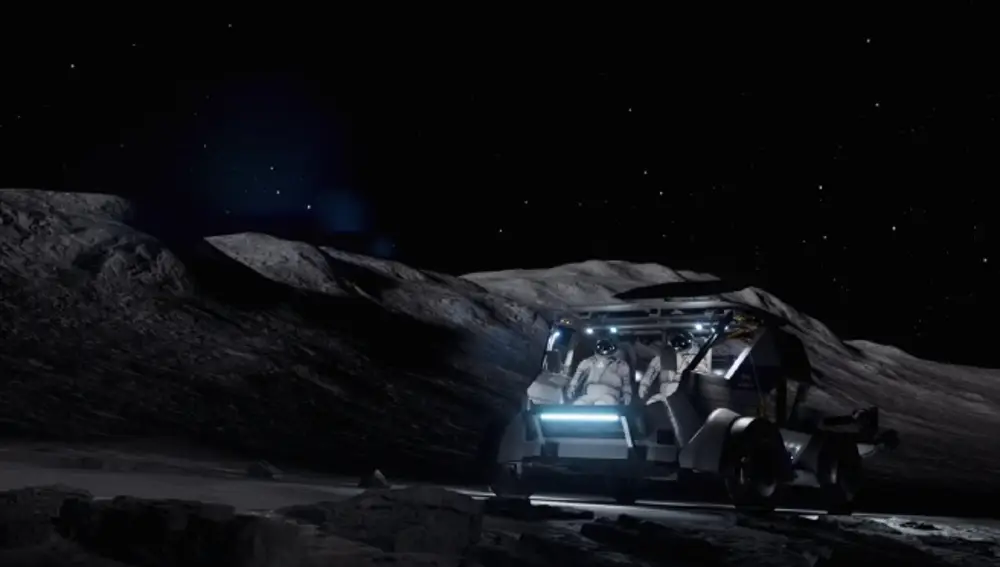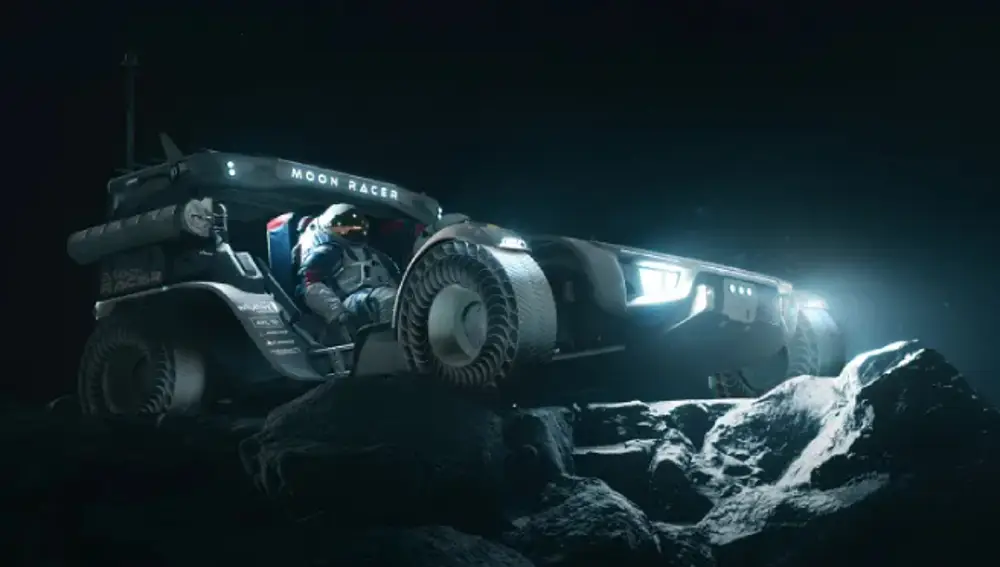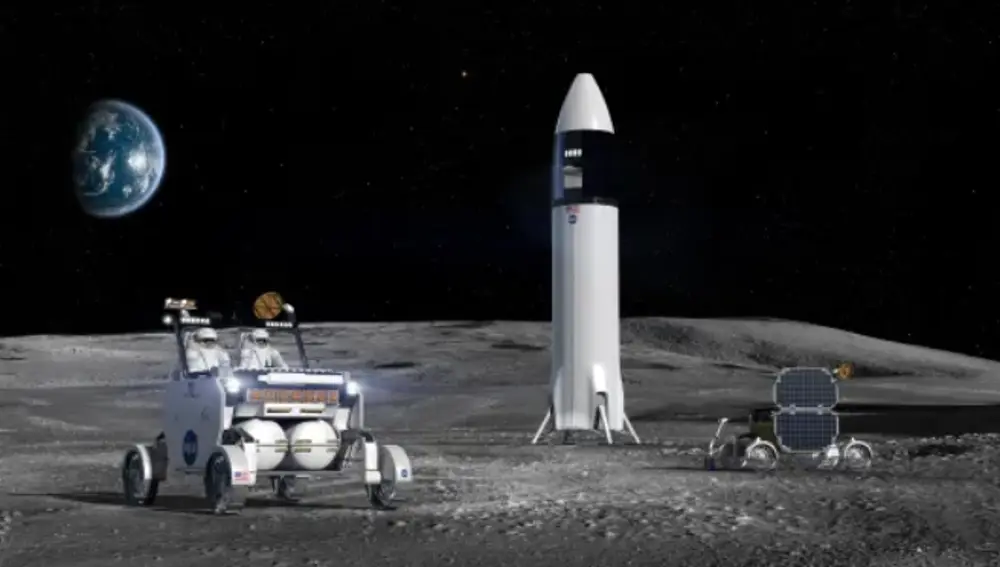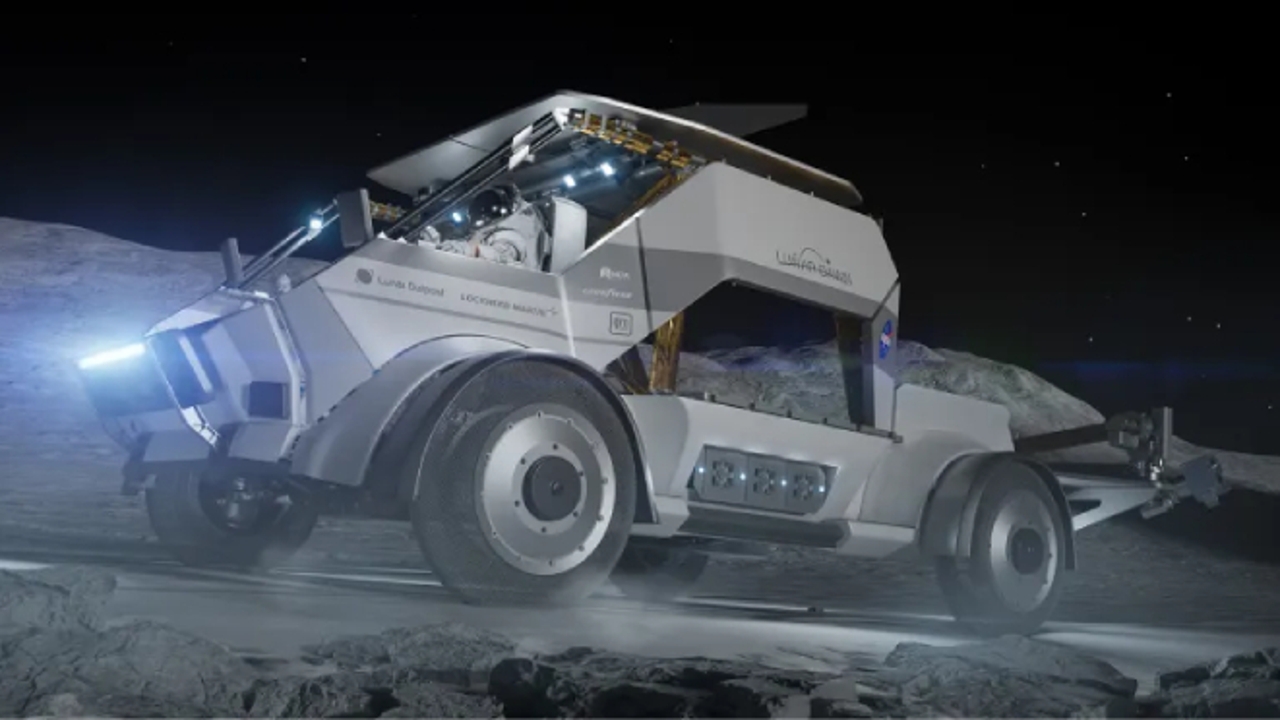The POT has announced which are the three projects chosen to develop the LTVacronym in English for Lunar terrain vehicle, which astronauts will use on the Moon. As with other aspects of the program Artemissuch as the landing module that will take them from lunar orbit to the surface of the satellite (SpaceX/Blue Origin) or the suits they will use (Collins Aerospace/Axiom Space), it will be private sector companies that will make a vehicle a reality that must survive and operate for a decade at the Moon's south pole.
The selected proposals have been the Lunar Dawn of the company Lunar Outposthe moon racer of Intuitive Machines and the Flex of Astrolab. The companies mentioned are the ones that direct each of the projects, but several participate in each of them. They will have to be in charge not only of the development and manufacturing of the rover, but also of its transfer to the Moon and the execution of operations on the satellite. These will not only be those required by NASA, but suppliers will be able to use their LTV to make commercial activities compatible that have no relation to the missions of the US space agency.
As explained Lara Kearneydirector of the Extra-vehicular Activity and Human Mobility on the Surface Program at NASA Johnson Space Center, the vehicle that is finally chosen must operate 24 hours a day, 365 days a yearwith periodic breaks to charge, and endure the harsh conditions of the lunar night, with temperature changes of up to 260 degreesthe strong radiation and rocky terrain of the Moon.
Its range must be at least 20 kilometers per day and have advanced technologies for energy management, autonomous driving and state-of-the-art navigation and communications systems. Crews will use the LTV to explore, transport scientific equipment and collect samples from the lunar surface, much further than they could on foot.
Between Artemis missions, when there are no astronauts on the lunar surface, the LTV will continue to operate remotelyso at no time will its activity cease.
'I would like to send all three to the Moon, but The decision will depend on the budget. If all I can afford is one, we'll have it,' Kearney said. The budget, in any case, is large: 4.6 billion dollars.
NASA will work with each of the chosen teams for a year to reach what is known as preliminary design review. At this stage, the financial injection is small compared to what will come later, only a few tens of millions. Once completed, NASA will select one or more of the companies to develop the project with a view to a demonstration on the lunar surface at the end of this decade.
Artemis Ithe first mission of the program that seeks to establish a human presence on the Moon after half a century without any astronaut having set foot on it, took place in November 2022. Artemis IIthe first manned mission of the program and which will orbit the Moon, is scheduled for September 2025. With Artemis III; in September 2026, astronauts will step on its surface. NASA hopes that lunar rovers can be taken to the Moon before Artemis Vwhich will be the third mission of the program in which the astronauts will land on the moon and is scheduled for 2029.
Lunar Dawn

The Lunar Dawn is being developed not only to survive the frigid temperatures of the lunar night but to be able to continue operating during this period which lasts two weeks. It is being designed to be low maintenance, will have capabilities for various commercial uses and will include a reconfigurable loading platform that will allow the change of payloads through a robotic arm. The Lunar Outpost proposal includes the participation of Lockheed Martin, General Motors, The Goodyear Tire & Rubber Company and MDA Space.
moon racer

Intuitive Machines is the company that managed to land the lander on the moon last February Odysseus on the Moon, although in an uneven way. Its rover has the involvement of AVL, Boeing, Michelin and Northrop Grumman. This team plans to deploy the vehicle using the lunar lander Nova-D that Intuitive Machines is developing. With its ability to deliver payload to the Moon demonstrated, its proposal includes being able to replace tires and other components of the rover as necessary during the decade of service.
Flex

The team led by Astrolab, a company created by former SpaceX employees, includes Axiom Space and Odyssey Space Research. Your vehicle may transport two astronautslike the previous ones, and will have a robotic arm for both scientific exploration and cargo tasks.

